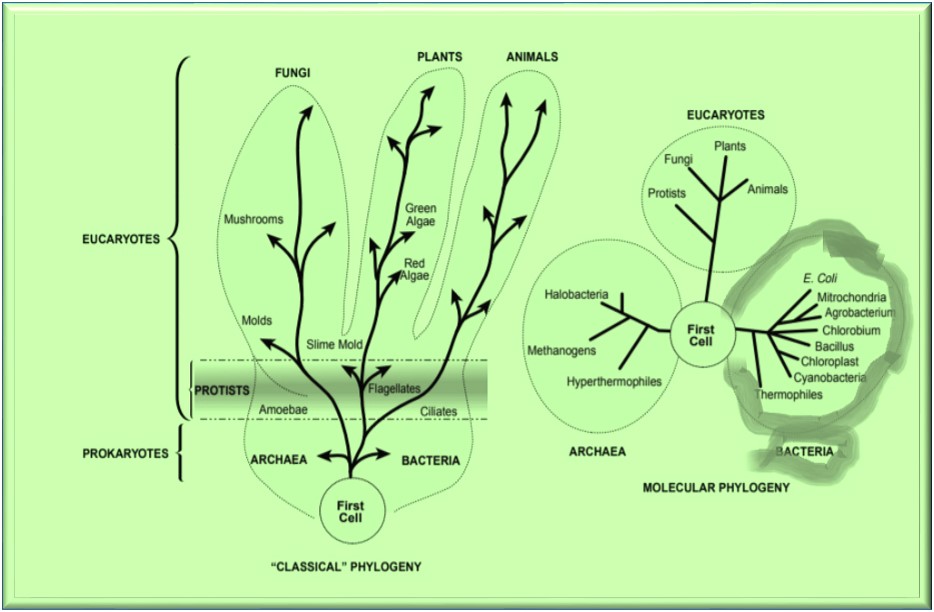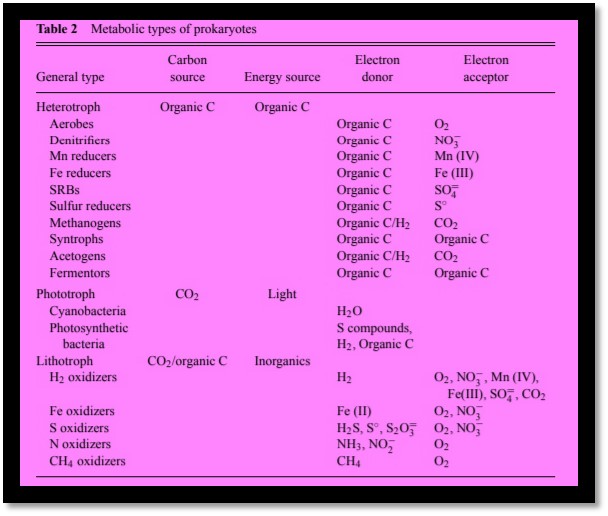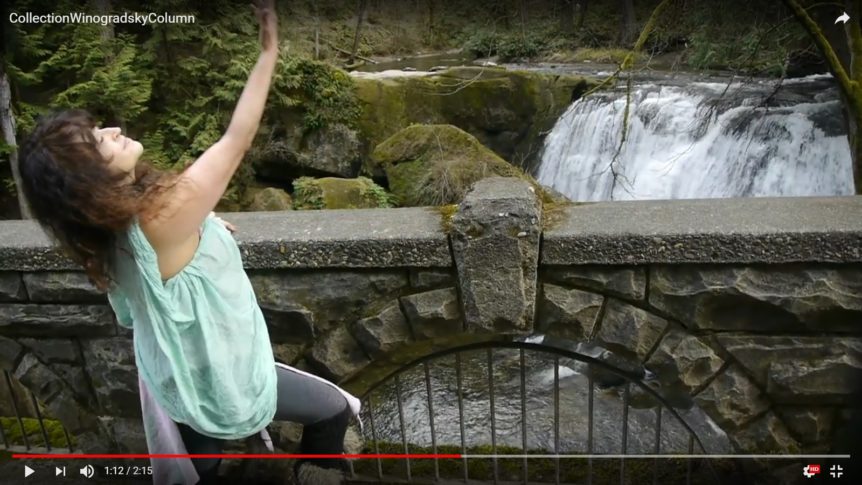
Winogradsky Column – Why sediment for creating your personal, stratified, microbial garden?
Most of the microbes in the sediment you will collect for your Winogradsky column will belong to one of the two domains – The Archaea or the Bacteria.
This diagram shows the three domains life is divided into, based on molecular biology and originally established by the work of Carl Woese.
The Bacteria will rule the sediment environment, since they are the most active biochemically and are present in the highest biomass. This is because the Bacteria are metabolically versatile. They can oxidize organic carbon in a number of clever ways. The Winogradsky column you will create, is a replica of the stratified groups that occur naturally in the sediment. The characteristic vertical nutrient (electron donor and electron acceptor) profiles seen in sediments are a result of microbial activities, with each nutrient a product or reactant of one or more metabolic groups.
Thanks to advances in microbiology that wield the tools of molecular biology, the way these diverse microbial populations exploit the chemical environment of a sediment, and the way these microbial populations form a delicate balance of interdependence, has been more vividly understood.

Metabolic Groups
Here is a list of some of the metabolic groups of microbes that you will be scooping up from the sediment you collect, to create your Winogradsky columns (reference: Table 2, p. 409, from Annu. Rev. Earth Planet. Sci. 1997. 25:403–34, SEDIMENT BACTERIA: Who’s There, What Are They Doing, and What’s New? By Kenneth H. Nealson).
In this paper, Dr. Nealson explains that we Eukaryotes (from the third domain in the WOESE diagram shown above), are limited to energy sources that can be converted into glucose (a sugar used to make energy) and to oxygen as the only electron acceptor, which helps stoke the wheels of our metabolic cycle (like adding air to a fire).
But Bacteria have us and the other Eukaryotes beat, because they can use many kinds of electron donors, both organic and inorganic, as well as many alternative electron acceptors or “oxygen substitutes” to turn the respiratory wheels that makes life "go".
Collection Video - Part 3 in Series
Enjoy the video shown below, where I demonstrate the collection of the ingredients in nature, for creating your own Winogradsky Column!
Music
Kate Bush, "The Sensual World." And the waterfall music is provided by Mother Earth.









